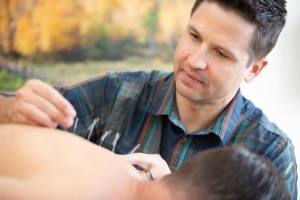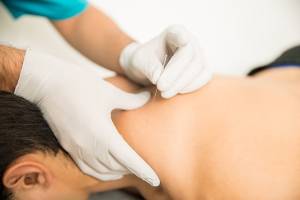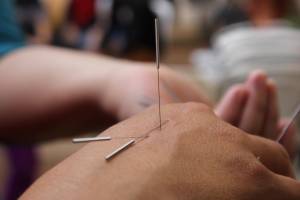In the realm of alternative medicine and physical therapy, both dry needling and acupuncture are well-known techniques that involve the use of needles to alleviate pain and improve overall health. While these practices may appear similar at first glance, they differ significantly in their methodologies, underlying philosophies, and intended outcomes. Understanding these differences is crucial for patients seeking the right treatment for their needs. This article delves into the distinct characteristics of dry needling and acupuncture, helping you make an informed decision about which therapy might be best suited for you.
Origins and Philosophical Foundations
Acupuncture: An Ancient Practice Rooted in Traditional Chinese Medicine (TCM)
Acupuncture has a history that spans thousands of years, originating from Traditional Chinese Medicine (TCM). It’s based on “Qi,” the vital energy flowing through the body along pathways called meridians. According to TCM, when the flow of Qi is disrupted, it leads to illness or pain. Acupuncture restores Qi balance by inserting thin needles into specific body points called acupoints. These points are believed to correspond to different organs and functions in the body.

The goal of acupuncture is to promote overall health and well-being by harmonizing the body’s energy flow. Practitioners of acupuncture often consider the patient’s physical, emotional, and spiritual health, aiming for holistic healing rather than just addressing symptoms.
Dry Needling: A Modern Technique Grounded in Western Medicine
In contrast, dry needling is a relatively modern technique developed within the framework of Western medicine. It emerged in the latter half of the 20th century as a treatment for musculoskeletal pain, particularly in physical therapy settings. Unlike acupuncture, dry needling does not rely on the concepts of Qi or meridians. It targets the musculoskeletal system, treating trigger points—tight muscle bands causing pain and dysfunction.
Dry needling inserts thin needles into muscles to release tension, improve blood flow, and reduce pain. It’s a targeted approach based on scientific understanding of anatomy, neurology, and pain mechanisms for musculoskeletal issues.
Technique and Application
Acupuncture: A Holistic Approach with a Focus on Energy Balance
During an acupuncture session, the practitioner selects specific acupoints based on the patient’s condition. The needles are usually inserted superficially, just beneath the skin, and are left in place for 15 to 30 minutes. Needle quantity and points depend on the patient’s symptoms and the practitioner’s health assessment.
Acupuncture treats various conditions, including chronic pain, stress, anxiety, digestive issues, and fertility problems. The treatment gently stimulates the body’s natural healing by balancing the flow of Qi.
Dry Needling: A Targeted Approach for Musculoskeletal Pain

In dry needling, the practitioner identifies trigger points within the muscle tissue. These are areas of hyperirritability that can cause pain both locally and in referred areas. The needles are inserted directly into these trigger points, often to a deeper level than in acupuncture, with the goal of eliciting a local twitch response. This response indicates that the muscle fibers have been released, leading to a reduction in pain and improvement in function.
Dry needling is primarily used to treat conditions such as muscle pain, tension headaches, myofascial pain syndrome, and sports injuries. It is often part of a broader physical therapy program, which may include exercises, manual therapy, and other interventions to address the underlying causes of pain and dysfunction.
Scientific Evidence and Effectiveness
Acupuncture: A Well-Researched Practice with Mixed Evidence
Acupuncture has been the subject of extensive research, with studies exploring its effectiveness for various conditions. The results are mixed, with some studies showing positive outcomes, particularly for chronic pain, while others suggest that the benefits may be due to a placebo effect.
The World Health Organization (WHO) and the National Institutes of Health (NIH) recognize acupuncture as a viable treatment option for certain conditions, including chronic pain, osteoarthritis, and migraines. However, the scientific community continues to debate the mechanisms behind acupuncture’s effects, with some researchers attributing them to the placebo effect or the body’s natural pain-relieving responses.
Dry Needling: Emerging Evidence Supporting Its Use
Dry needling is a newer practice, and while research is ongoing, there is a growing body of evidence supporting its effectiveness for treating musculoskeletal pain. Studies have shown that dry needling can reduce pain and improve function in patients with conditions such as chronic low back pain, shoulder pain, and tension-type headaches.
However, because dry needling is a relatively new technique, it has not yet been as extensively studied as acupuncture. The existing research is promising, but more high-quality studies are needed to fully understand its long-term effectiveness and the best practices for its use.
Safety and Side Effects
Acupuncture: Generally Safe with Minimal Side Effects

Acupuncture is generally considered safe when performed by a trained and licensed practitioner. The most common side effects are mild and include bruising, soreness, and slight bleeding at the needle insertion sites. Serious complications, such as infections or organ injury, are extremely rare when the procedure is done correctly.
Patients with certain conditions, such as bleeding disorders or those taking blood thinners, should inform their practitioner before undergoing acupuncture. Additionally, it is important to seek treatment from a qualified acupuncturist to minimize the risk of adverse effects.
Dry Needling: Safe but Requires Skilled Practitioners
Dry needling is also considered safe when performed by a skilled and trained practitioner, such as a physical therapist or a doctor. However, because it involves deeper needle insertion, there is a slightly higher risk of complications compared to acupuncture. Potential side effects include temporary soreness, bruising, and in rare cases, pneumothorax (a collapsed lung) if the needle is inserted too deeply in the chest area.
As with acupuncture, it is crucial to seek treatment from a qualified practitioner who has received specific training in dry needling to ensure safety and effectiveness.
Choosing Between Dry Needling and Acupuncture
Patient Preferences and Treatment Goals
The choice between dry needling and acupuncture depends on patient preferences, the condition, and therapy goals. Acupuncture suits those seeking a holistic approach, especially for symptoms linked to Qi imbalance.
Dry needling is ideal for patients with specific musculoskeletal issues like chronic muscle pain, sports injuries, or tension headaches. It provides a targeted approach to pain relief and function improvement, often within a physical therapy program.
Consultation with Healthcare Providers
Consult a healthcare provider to assess your condition and recommend the most appropriate therapy before deciding on treatment. They can help you understand the benefits and risks of each option, ensuring an informed decision.

Conclusion
While dry needling and acupuncture may appear similar due to their use of needles, they are fundamentally different practices with distinct philosophies, techniques, and applications. Acupuncture, rooted in ancient Chinese medicine, focuses on balancing the body’s energy flow to promote overall health and well-being. Dry needling, a more recent development in Western medicine, targets specific trigger points in the muscles to alleviate pain and improve function.
Both techniques have their merits and can be effective for different conditions. Understanding the differences between them can help you choose the right treatment for your needs, whether you are looking for a holistic approach to health or a targeted solution for musculoskeletal pain. As always, consulting with a qualified healthcare provider is key to making the best decision for your health and wellness.

